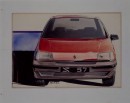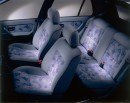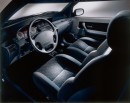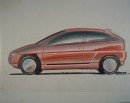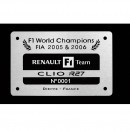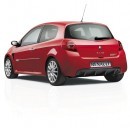Name one substantial automotive critical and commercial success of modern times other than Volkswagen’s Golf and France’s Renault Clio. It is hard, right? Well, this is because the two models have copiously dominated the sales charts each year, battling for supremacy even across classes. While the German compact car has undeniably ruled the European market since way back in 1974, the Clio’s continued apparition since 1990 clearly stands for the single most important threat to its crown.
Now in its fifth generation, the French supermini is celebrating its 30th anniversary with a sales tally that has already surpassed the 15-million-unit threshold and has adamantly ruled deliveries both at home in France as well as across the overall European B-segment.
Following in the footsteps of the equally successful Renault 5, the Clio was presented back in 1990 as a way of signaling the recovery of the French automaker from a hard 1980s half decade. It was a no-frills subcompact that married Renault’s move upmarket with the affordable nature of the segment.
And, best of all, Renault Sport created the Clio Williams. This was the start of hot hatch greatness, and the Clio has never abandoned its Renault Sport credo ever since.
The second-generation Clio was quickly recognized for reaching new standards in terms of habitability and comfort, while the third iteration proved Renault as a contender for greatness in terms of perceived interior quality. Later, the fourth version imposed a new design direction for the entire brand and now the current one is striving to achieve new levels of technical innovation.
As such, Renault is massively banking on the Clio’s newly introduced E-Tech hybrid technology. The new version uses not one, but two electric motors to achieve a combined power rating of 140 hp and strives to allow for up to 80% electric use in the city that could translate in a 40% increased fuel economy rating.
While the Captur crossover and larger Megane models feature the same powertrain with plug-in capabilities, the Clio remains a standard “parallel series” hybrid that makes do with the combination of two electric motors, a naturally aspirated combustion engine, an innovative gearbox and kinetic energy recuperation to supplement internal recharging capabilities.
Following in the footsteps of the equally successful Renault 5, the Clio was presented back in 1990 as a way of signaling the recovery of the French automaker from a hard 1980s half decade. It was a no-frills subcompact that married Renault’s move upmarket with the affordable nature of the segment.
And, best of all, Renault Sport created the Clio Williams. This was the start of hot hatch greatness, and the Clio has never abandoned its Renault Sport credo ever since.
The second-generation Clio was quickly recognized for reaching new standards in terms of habitability and comfort, while the third iteration proved Renault as a contender for greatness in terms of perceived interior quality. Later, the fourth version imposed a new design direction for the entire brand and now the current one is striving to achieve new levels of technical innovation.
As such, Renault is massively banking on the Clio’s newly introduced E-Tech hybrid technology. The new version uses not one, but two electric motors to achieve a combined power rating of 140 hp and strives to allow for up to 80% electric use in the city that could translate in a 40% increased fuel economy rating.
While the Captur crossover and larger Megane models feature the same powertrain with plug-in capabilities, the Clio remains a standard “parallel series” hybrid that makes do with the combination of two electric motors, a naturally aspirated combustion engine, an innovative gearbox and kinetic energy recuperation to supplement internal recharging capabilities.



